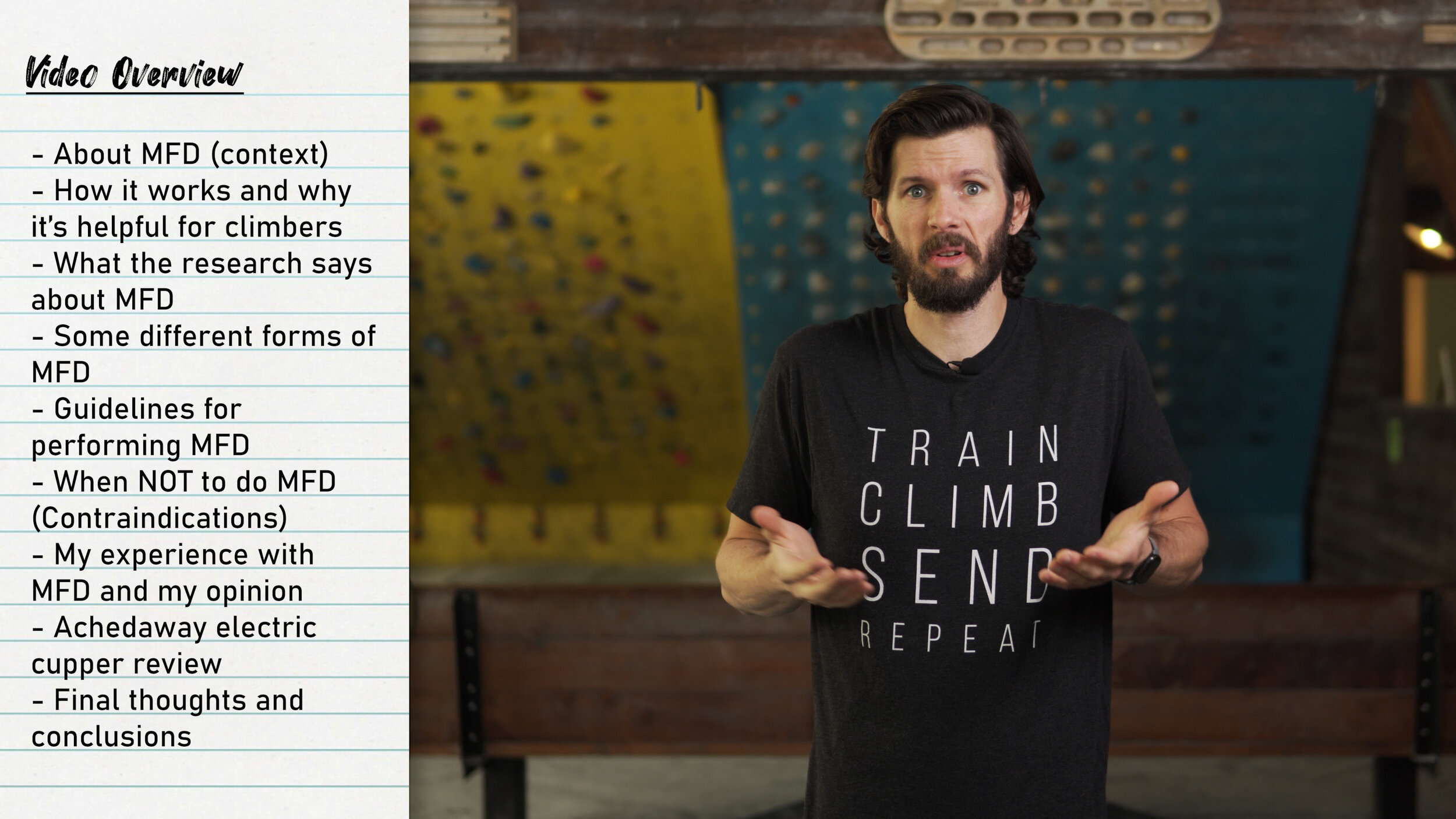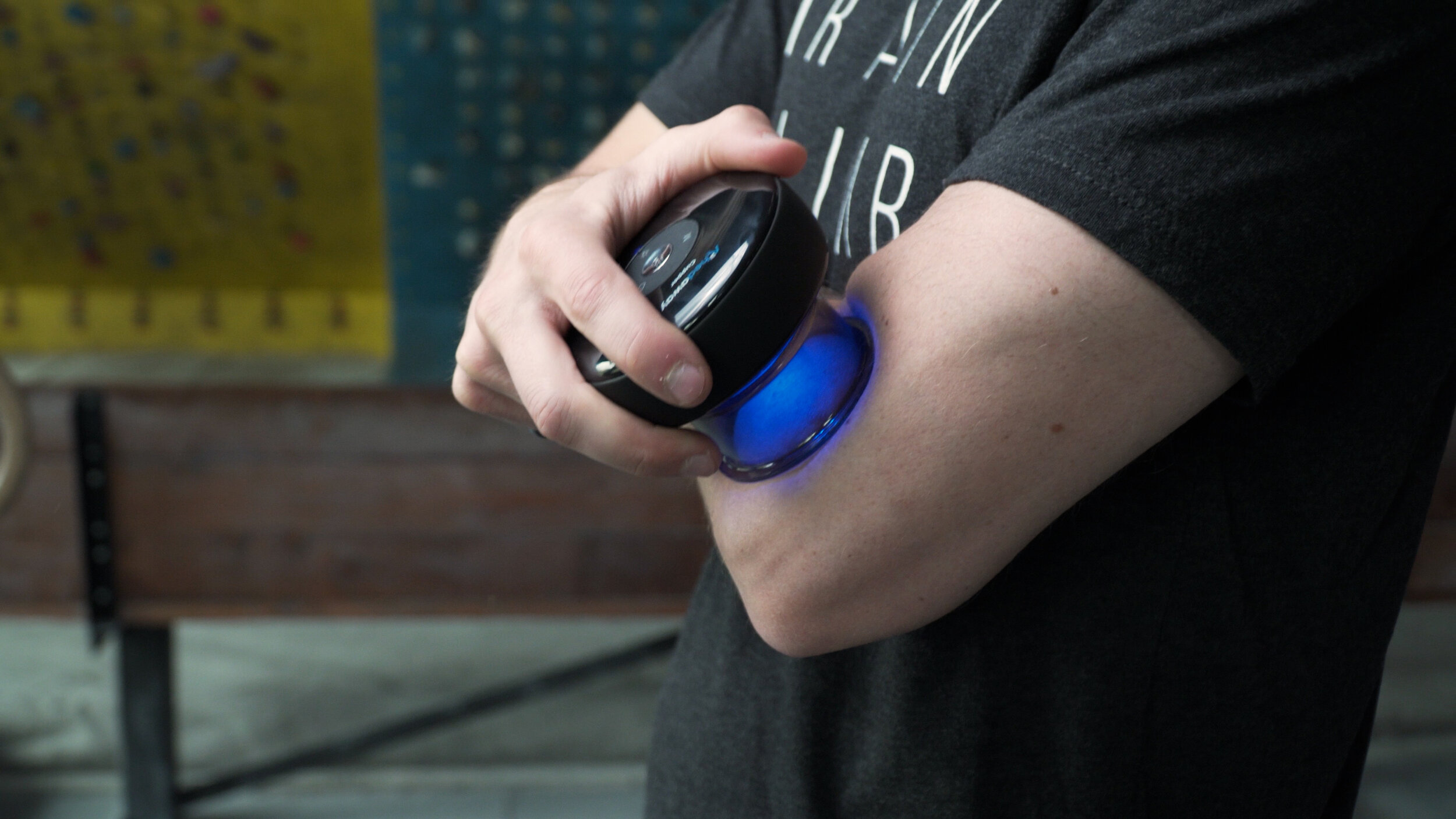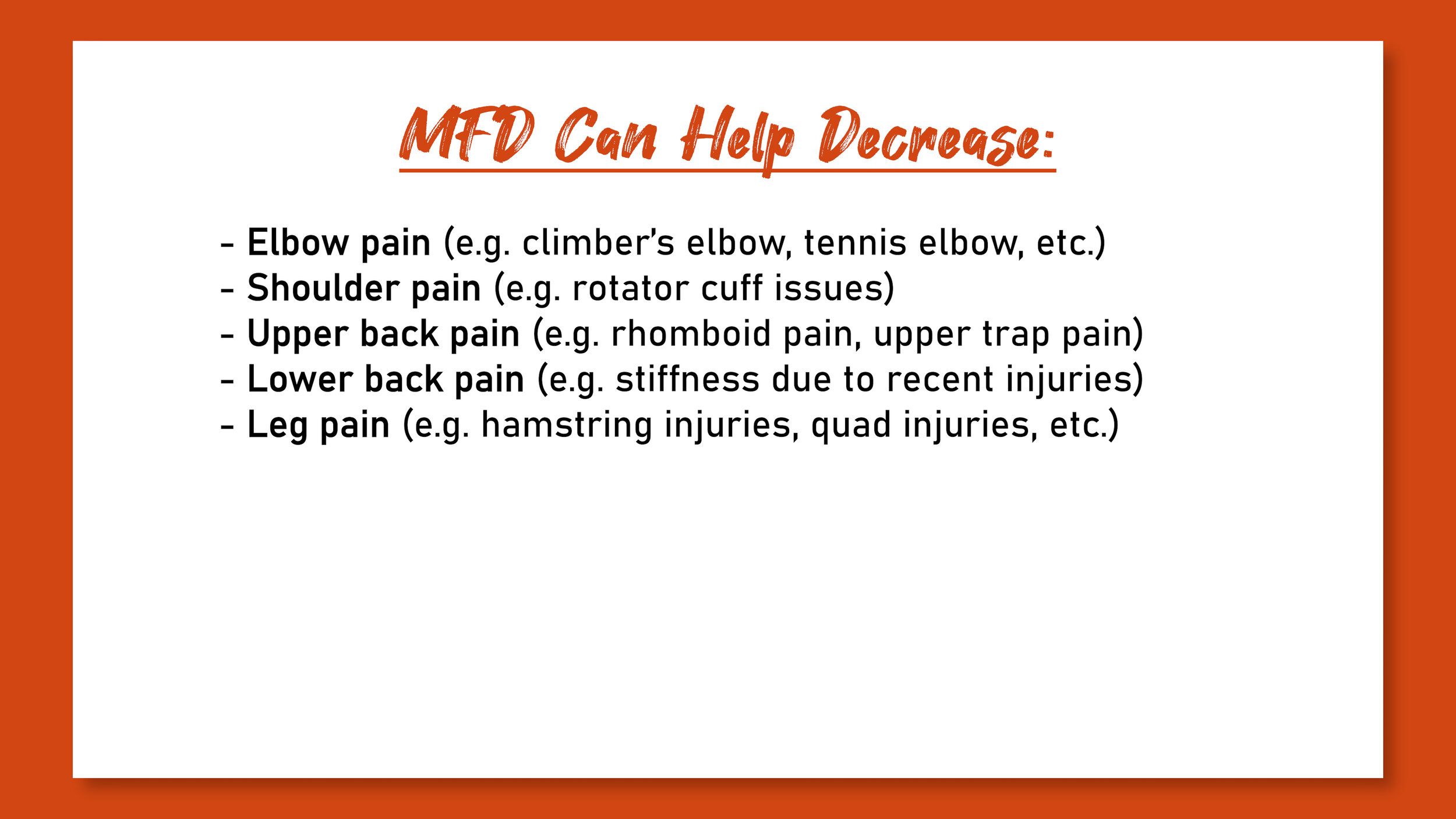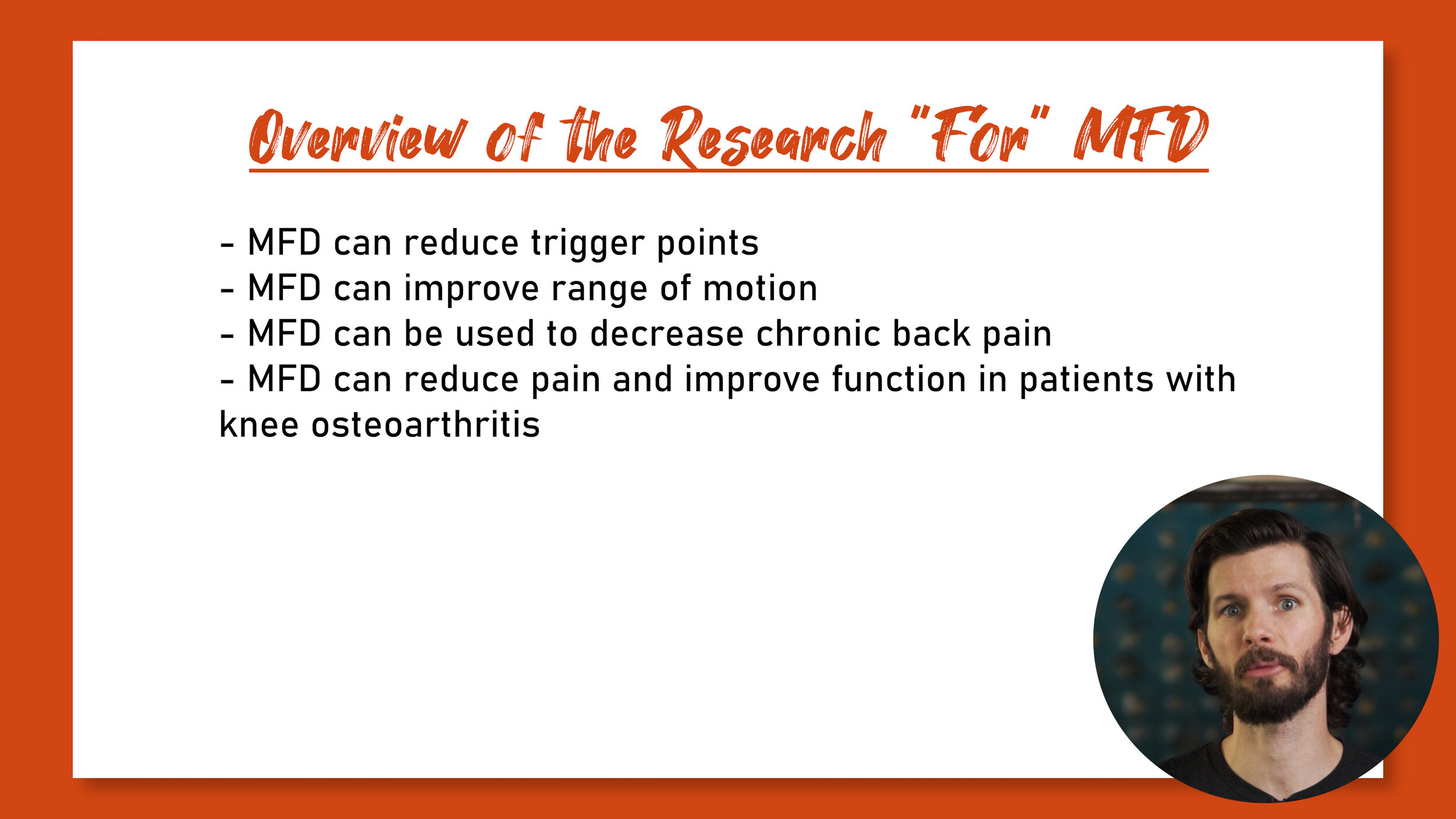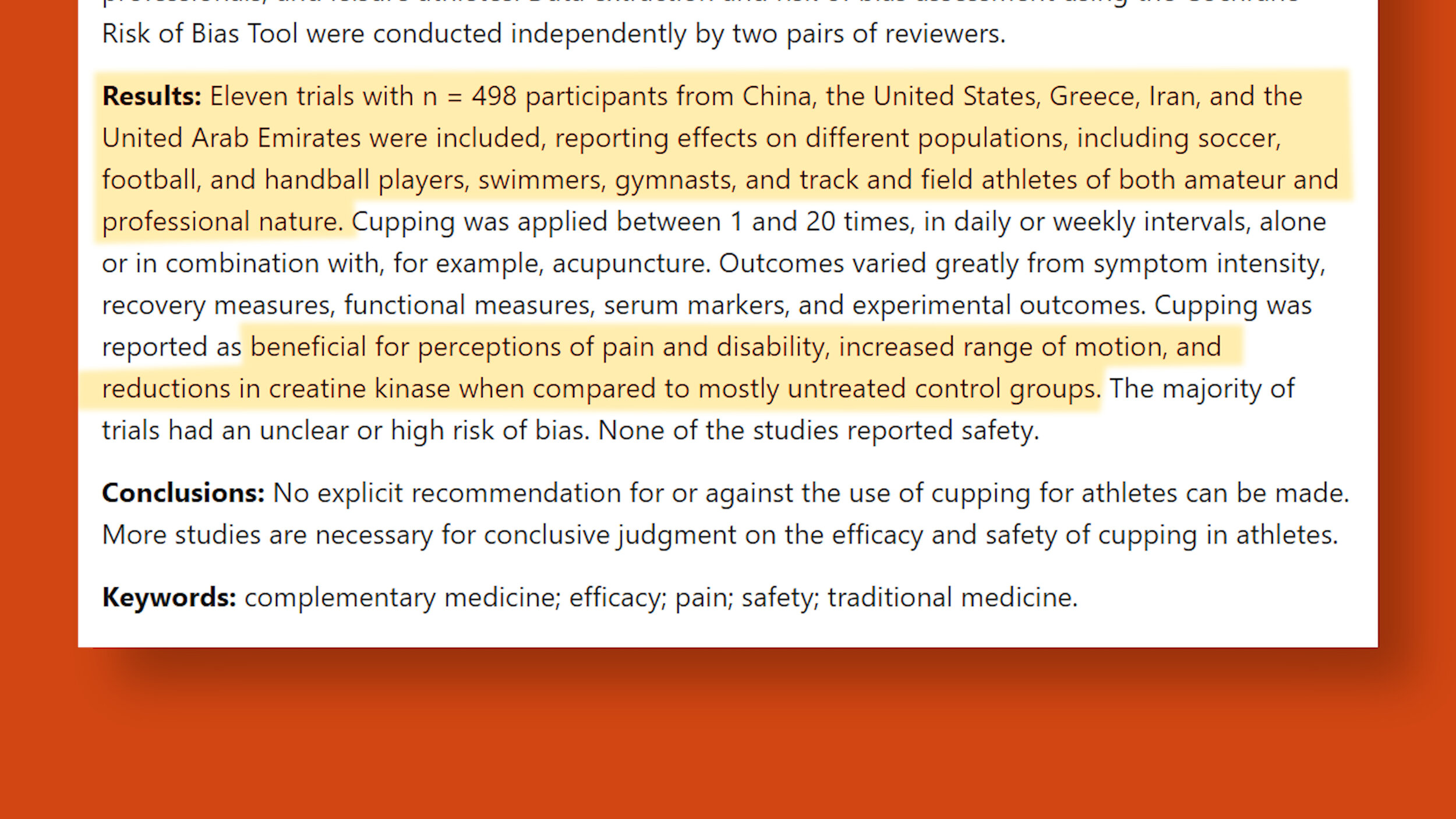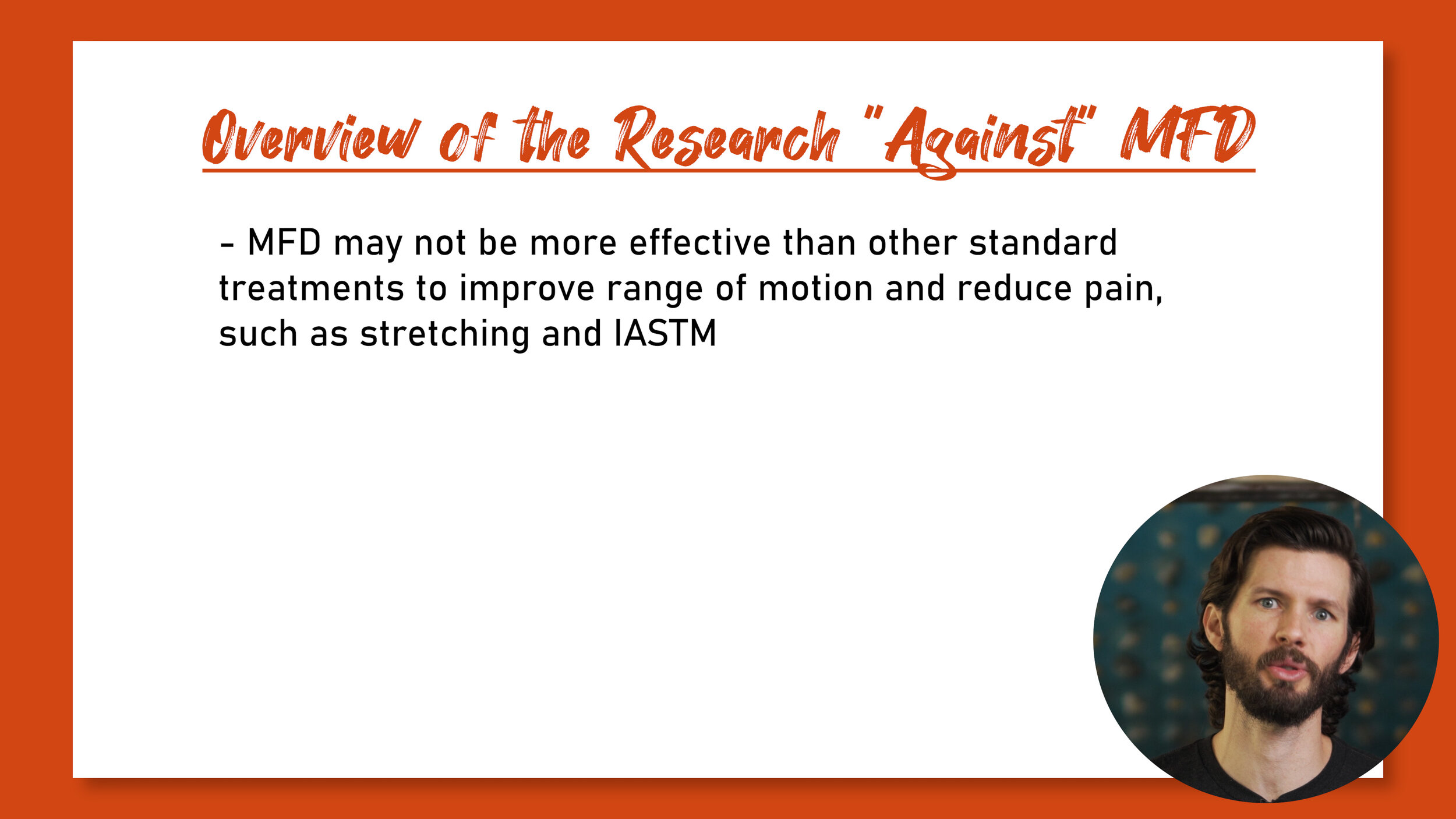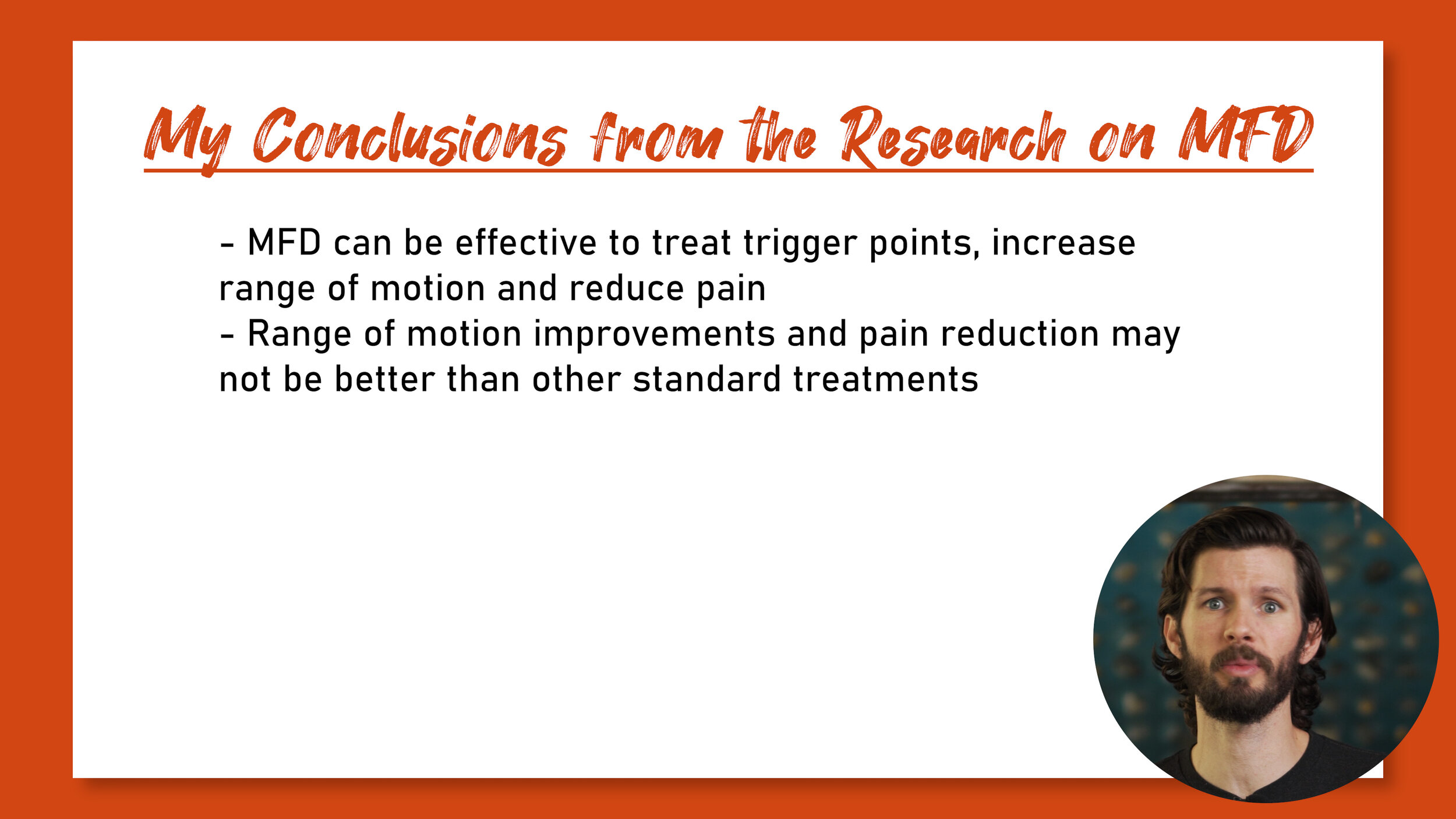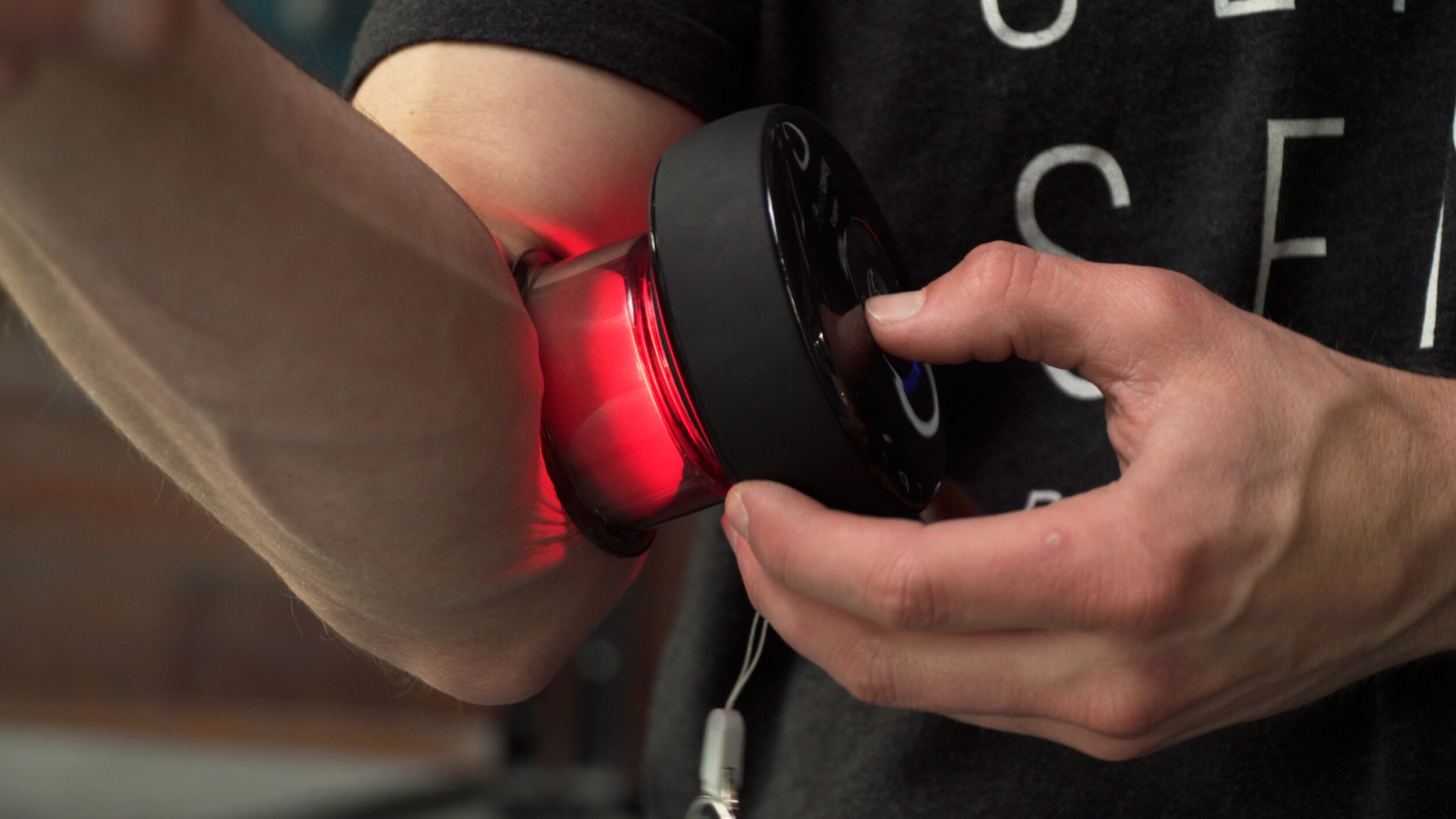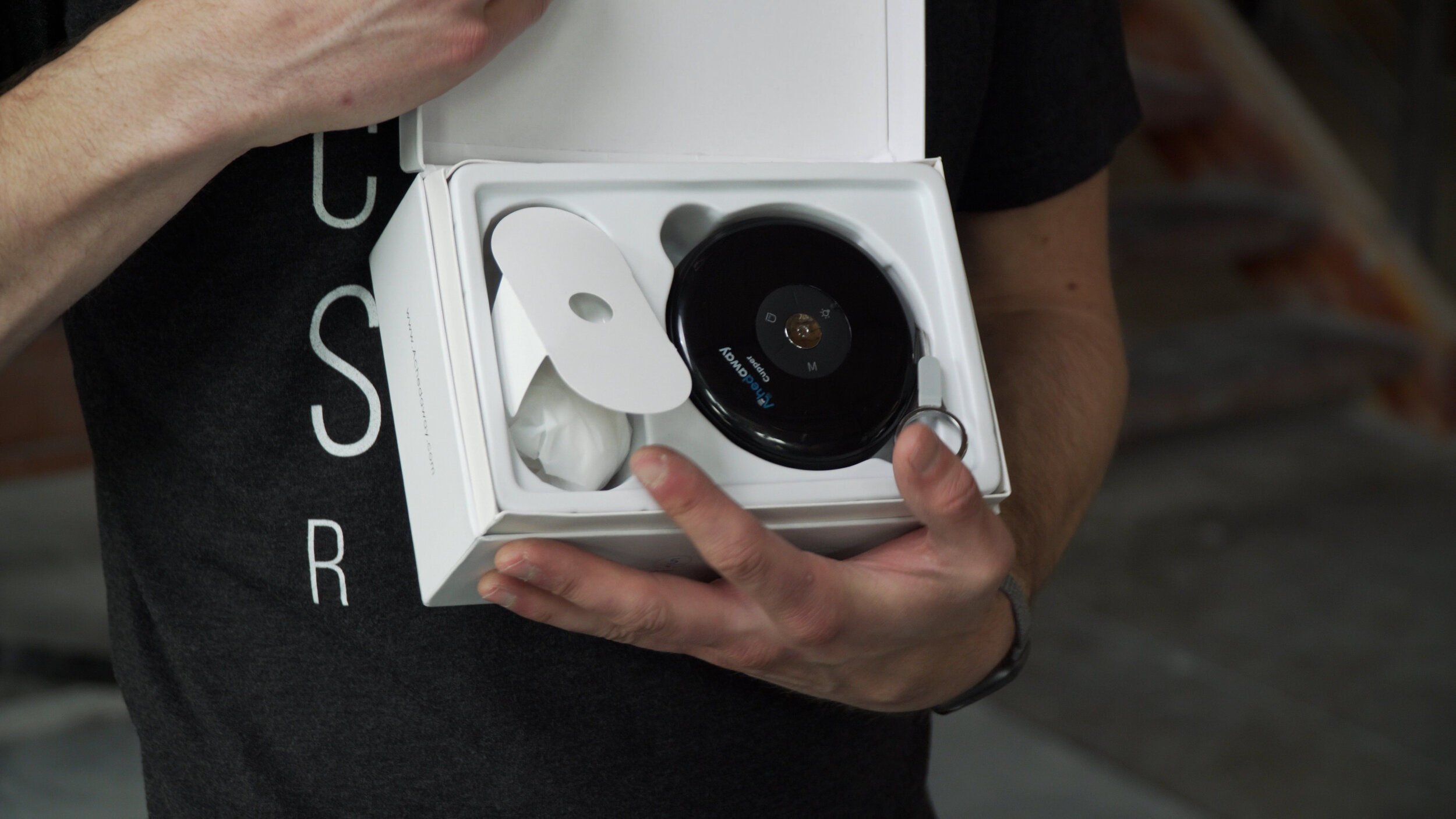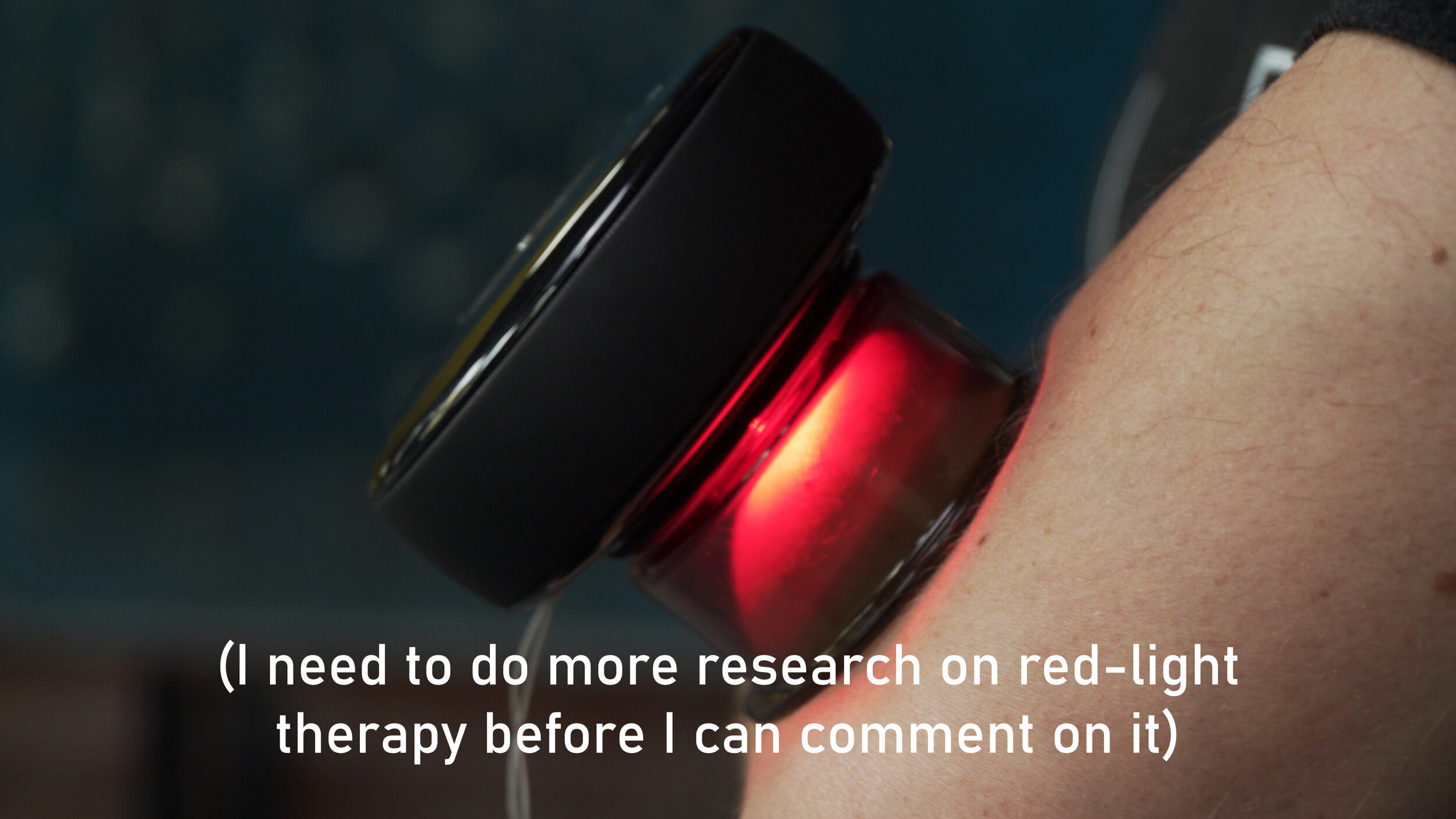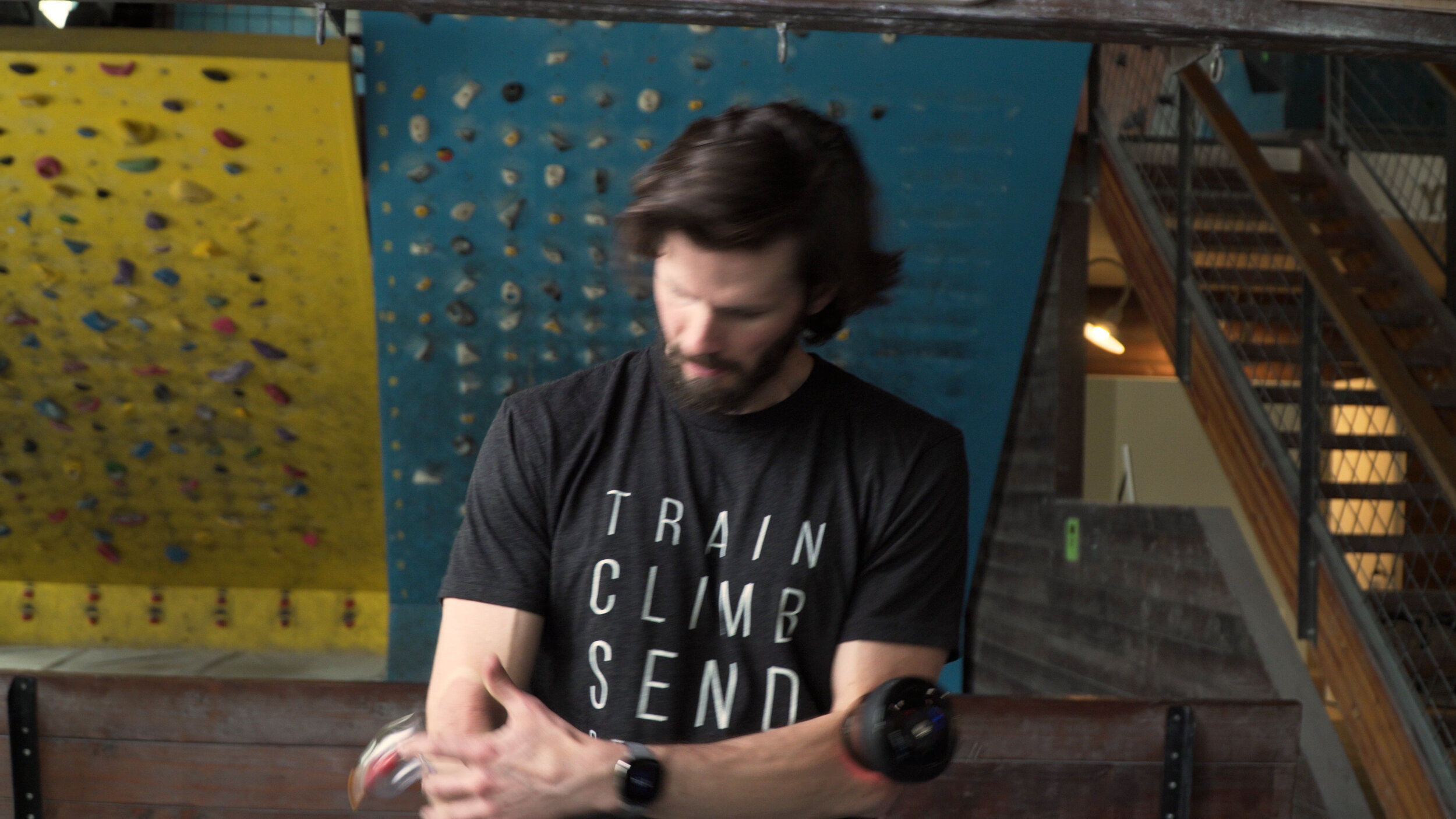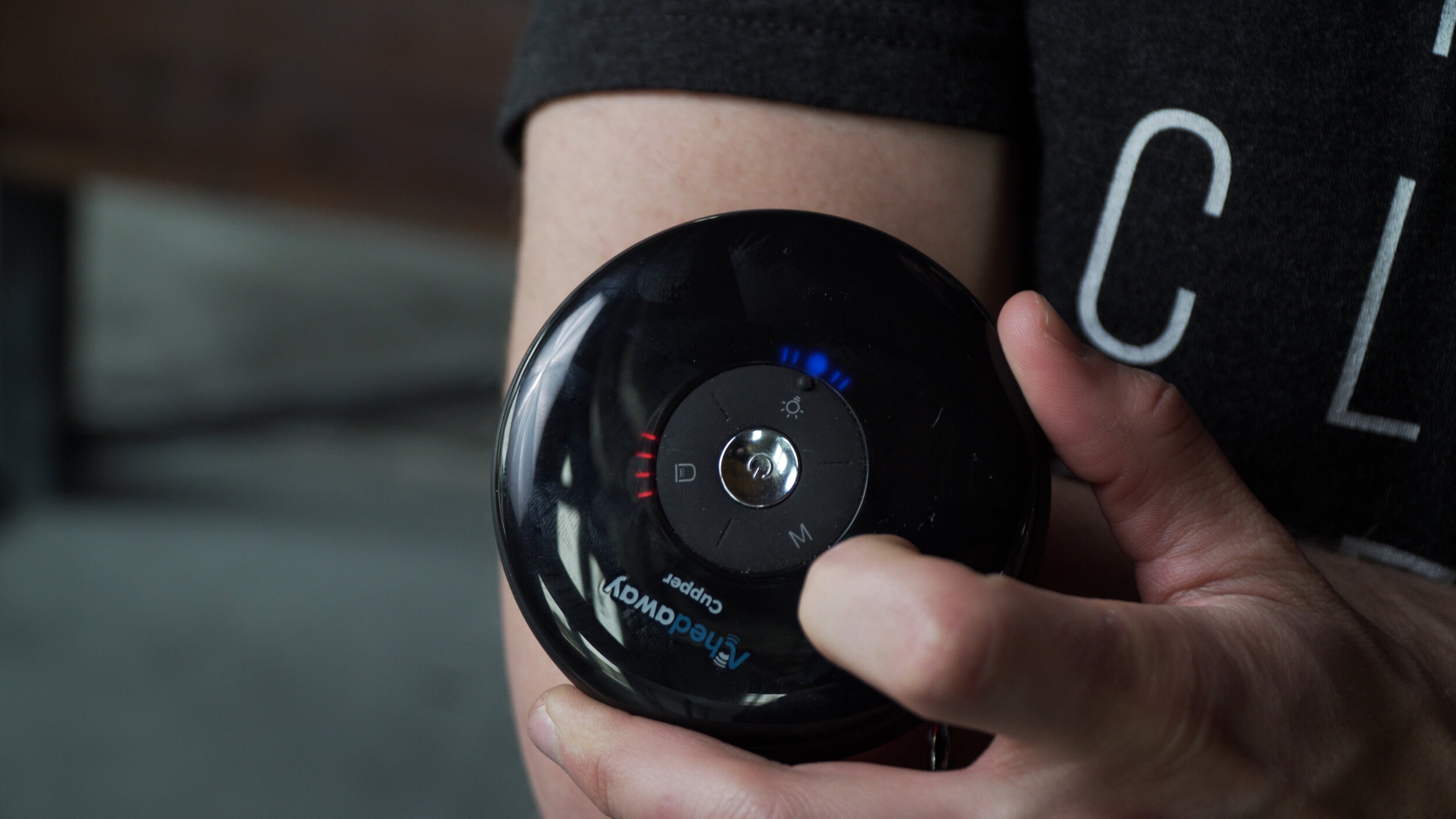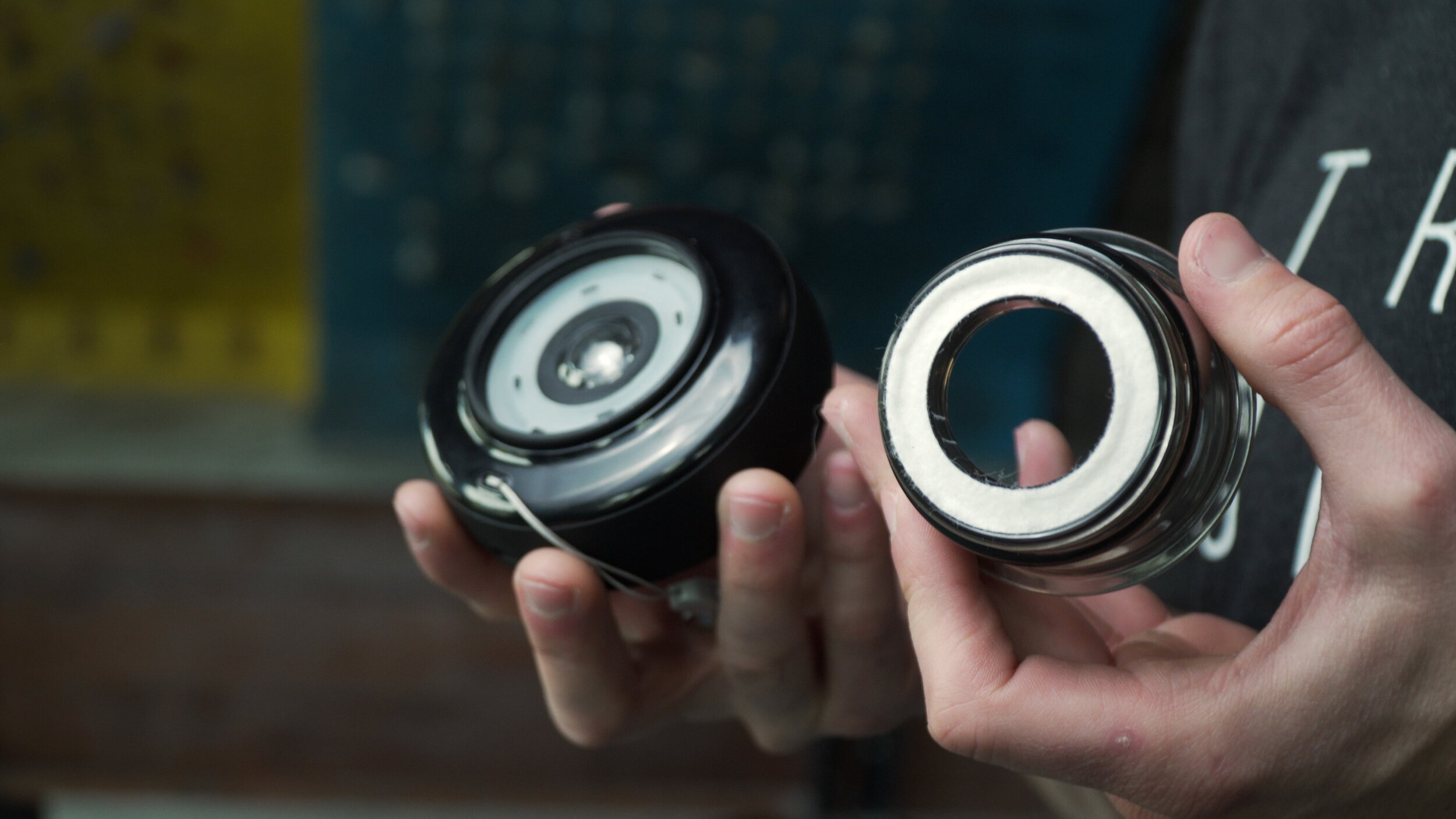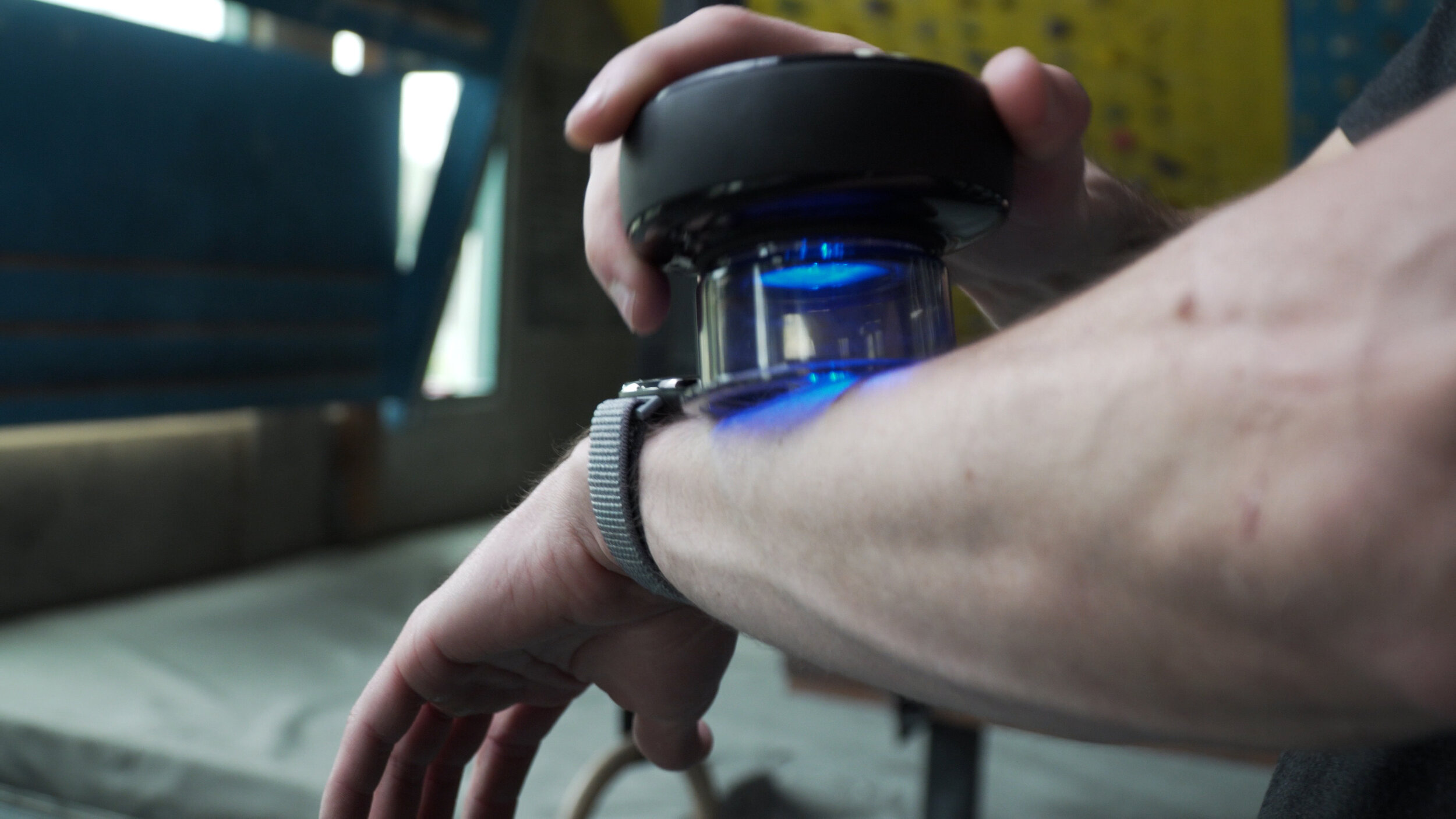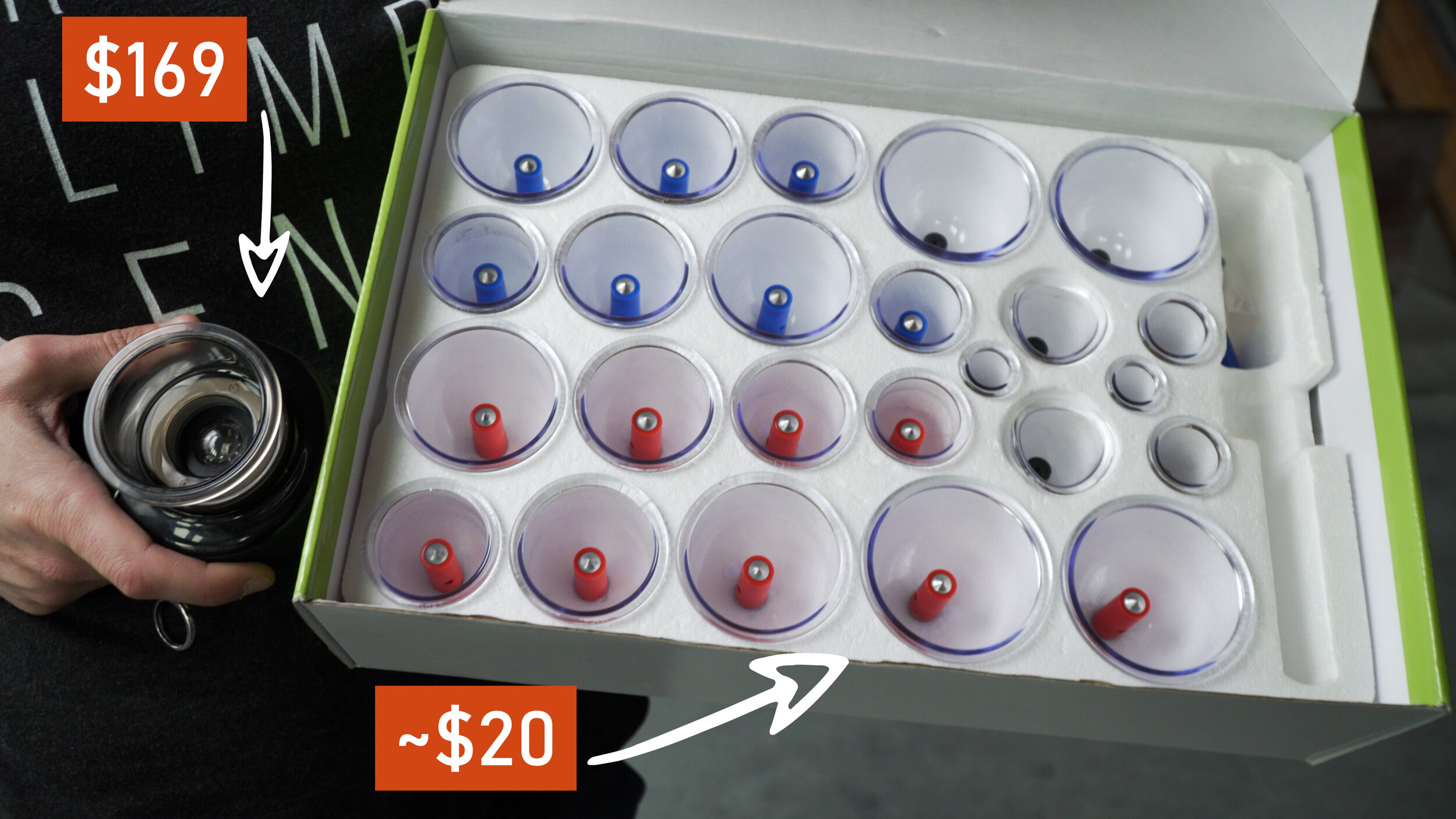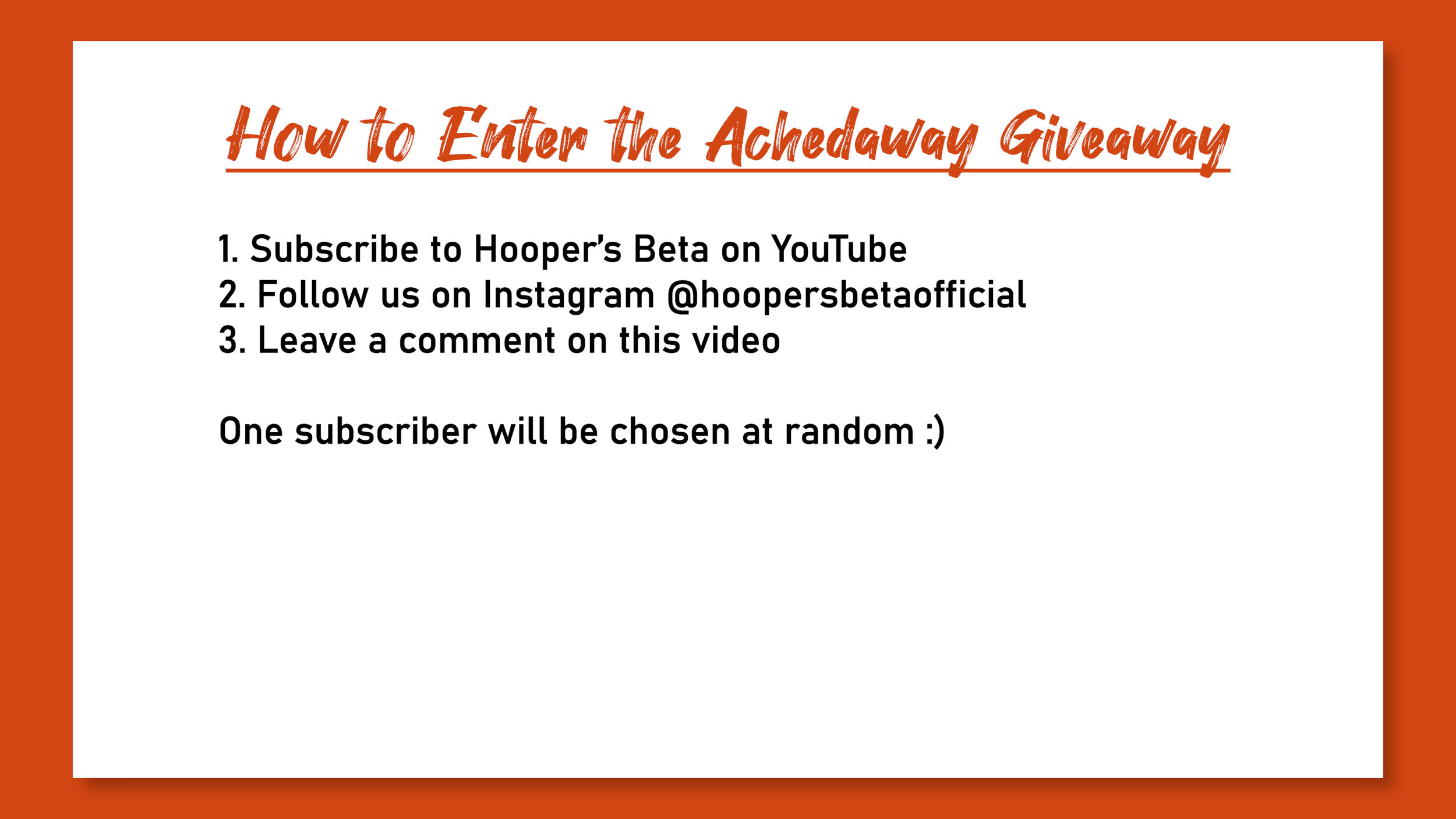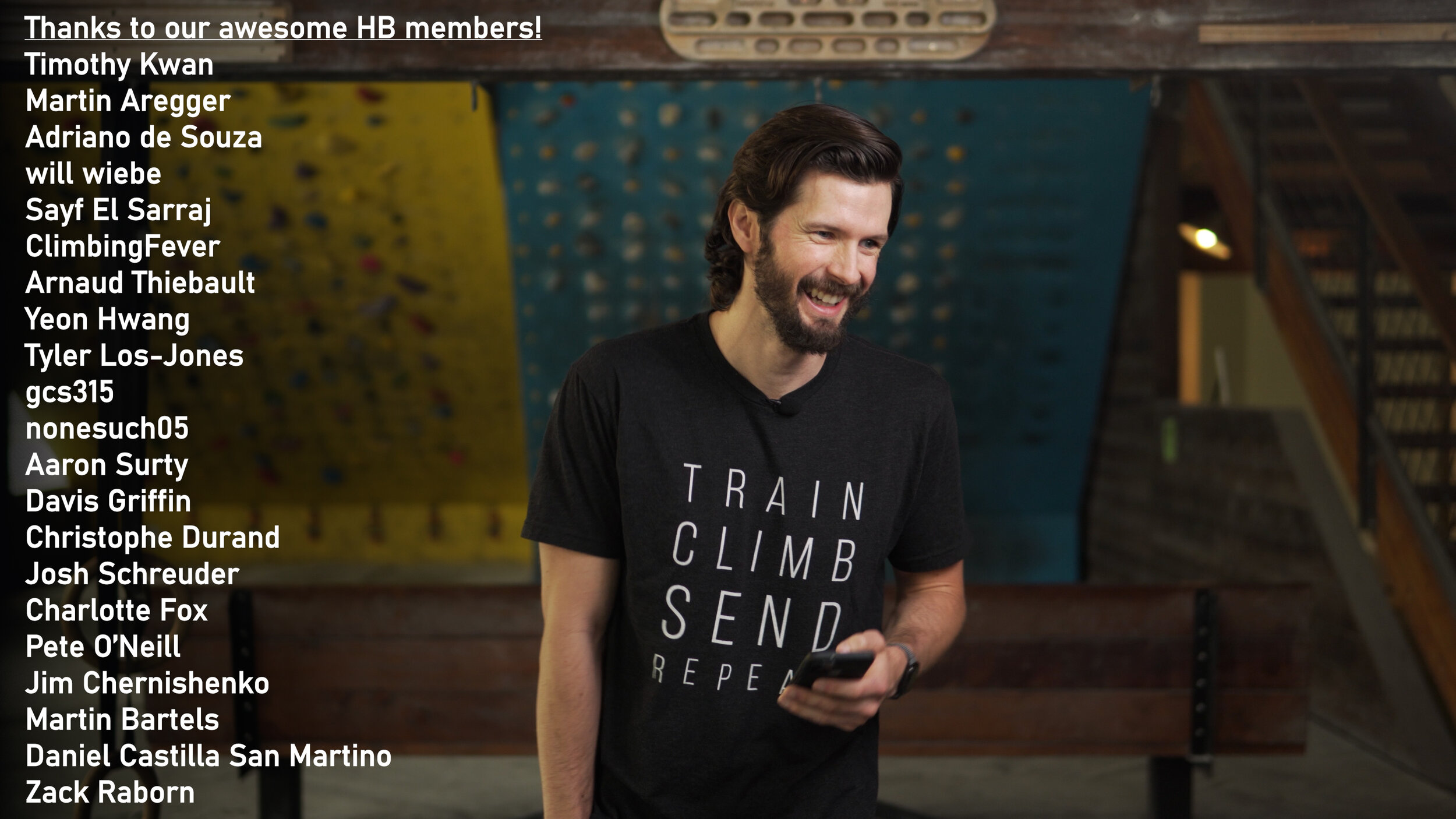Should Climbers Using Cupping to Help with Recovery? (Myofascial Decompression)
Hooper’s Beta Ep. 79
Introduction
There are obviously some serious misconceptions floating around about cupping and I don’t know about you guys, but I think it’s time to clear the air.
In this video, we’re taking an in-depth look at Myofascial Decompression, otherwise known as MFD or cupping therapy. We will discuss the benefits to climbers, especially for healing nagging injuries like climber’s/golfer’s elbow and tennis elbow. We’ll also talk about the different types of MFD, including a new electric dynamic cupping system, as well as what the research has to say about all this and, finally, we’ll cover best practices and recommendations if you want to try cupping out yourself! Sound like a lot of information? Heck yeah! “Suck” it up and let’s get to learning!
ABOUT MFD
Cupping has a somewhat rocky origin story, at least from a scientific point of view. Some say it originated as a way to remove “toxins'' from the body. Others note how it was used to treat maldigestion and headaches. There was a lot of speculation about cupping, but not a lot of research, which made it appear to be more “pseudoscience” and less “effective tool.”
Fortunately for us, research has advanced, and we can now use medical imaging, such as MRIs, to show that MFD is actually an effective tool. It improves the mobility between skin, fascia, and muscle and has been shown to reduce pain, improve mobility, increase circulation, and generally aid in the healing process. So while it won’t cure your upset stomach, it can be a useful tool for climbers to help us recover and climb at our best.
Speaking of useful tools, I mentioned earlier a cool new electric dynamic cupping system I have. It’s made by Achedaway and I will be talking about this later in the video, but you definitely don’t need this device to perform MFD. Also, I want to be clear on this: Achedaway sent us this cupping unit for free to review + giveaway. We thought it would be a good opportunity to talk about MFD in general, especially since we’ve mentioned it in other videos, but Achedaway is not paying us to make this video. No money changed hands, Achedaway has no influence over the content of this video, and they are not reviewing it before it’s published.
Now with that out of the way, let’s get to the good stuff.
HOW DOES MFD WORK?
MFD uses negative pressure to create separation of our 3 main layers of tissue: skin, connective tissue, and muscle. By separating these layers you can see improvements in blood flow and circulation. It can also help the 3 layers slide past one another easier which can improve mobility, and by doing so reduce pain.
MFD is usually used to treat general pain and muscular tension, but it can be used to promote healing in injured tissue in the later stages of healing and it can benefit the remodelling phase as the tissue strengthens.
Here are a few common issues MFD can help with:
Elbow pain such as tendinopathies
Shoulder pain such as rotator cuff issues
Upper back pain such as rhomboid or upper trap pain
Lower back pain such as stiffness due to a recent injury
And even leg pain caused by stiffness or injury to the quads or hamstrings
DIFFERENT FORMS OF MFD
There are many different forms of MFD, but I’m going to talk about a few specifically: static, dynamic, and static with active or passive range of motion. Let’s go into a few details about each type, as well as some fun variations.
STATIC MFD
Static MFD is perhaps the most commonly practiced, and the most well known by the layperson. It involves placing a cup in one position and leaving it there for the duration of the treatment. This is effective in creating separation of tissue at one location. This typically creates more bruise-like discoloration due to the constant, static pull in one spot, pulling more blood to that spot which will settle between the tissue layers and then slowly dissipate like a bruise.
The benefit of this technique is creating a longer, more focused release of tissue in one spot. This is good for an injury that is more isolated to one area.
DYNAMIC MFD
Dynamic MFD involves placing a cup in a position and then moving the cup over other areas. Typically this means less pressure through suction because too much suction would make it too hard or too painful to move. This works great over areas such as the back, but can be a little more challenging over smaller surface areas such as the elbows or forearms as the surface area constantly changes and is not flat throughout.
The benefit of this technique is to work over larger areas, break up additional adhesions through the movement, and it creates less bruise like discoloration as it does not remain in one place for too long.
ALTERNATE DYNAMIC
Now, this is a new one for me… an alternate dynamic form of cupping. If you have an electric cupper like the one from Achedaway, dynamic cupping can also be considered cupping that has a constantly changing amount of suction pressure. This is a super cool technique that will alternate levels of pressure and is easy with a tool like the electric cup but less functional with a standard cupping set as you could have to consistently remove and add pressure. Not fun, not convenient, not recommended.
The benefits of dynamic cupping like this are a combination of static and dynamic, as we just discussed. It stays in one spot so it works on specific trouble areas and creates great separation of tissue, but it does it with alternating pressure so it will not cause as much bruising as typical static cupping.
Now, I have to say, this part is great. Because one of the restrictions of cupping is bruising. You don’t want to cup over a bruised area until the bruising has resolved. So with this, you get the benefit of static with the great tissue separation without the bruising, meaning you can do it more often!
STATIC CUPPING WITH ACTIVE OR PASSIVE RANGE OF MOTION
Another super cool form of cupping is using static cupping BUT adding in active or passive range of motion. In this form, you would leave the cup in one place (static), BUT you would move through an active or passive range of motion that would benefit the affected limb or area. Example: placing a cup on your elbow and then bending and straightening your elbow. Note: for this to be passive, you would need a friend to passively move the joint for you.
The benefit of this form is that you are now actively moving the tissue underneath the cup while it is creating separation. This is great at creating functional changes and can really break down any areas of fibrosis or increased scar tissue.
BONUS: MEGA MFD COMBO STYLE!
Want to become a Shaolin cupping master? How about electric cupping with movement! This would be stationary dynamic cupping with movement, win win win! It can only be done with an electric cup though… sad sad sad.
Note: there are other forms of cupping in addition to the one’s I just mentioned, including “wet cupping,” but the aforementioned are the forms that I recommend and that have more research related to them, which is what I prefer to speak on. Also wet cupping involves actual blood letting. Let’s not do that. K thanks.
OK, so now that we know a little bit about MFD… is there any science to actually back it up? Is this legit, or total BS pseudoscience? Well, hopefully you know by now that I don’t just hop on here to talk about things that don’t have science one way or another. So let’s look at the positive AND negative research!
WHAT DOES THE RESEARCH SAY?
So, what does the research say about MFD? Well, that’s the cool thing: MOST of the research is in SUPPORT of MFD! Now, I’m not going to go into huge detail about each report, because I don’t want this video to be 3 hours long, but remember, I post all citations and small notes about the research in the show notes on the hoopers beta website, so be sure to check it out if you want some light reading of your own!
Research has shown that MFD can:
Be used to reduce trigger points
Can be used to improve range of motion
Can be used to decrease chronic back pain
There is even some research that showed cupping reduced pain and improved function in patients with knee OA??
What about the research against it?? This is the cool thing, the research “against” doesn't point out many flaws or dangers with MFD; rather, most of the research against it simply suggests that MFD may not be better than standard stretching or other treatments to improve range of motion or reduce pain.
For example, one article titled Effects of Cupping Therapy in Amateur and Professional Athletes: Systematic Review of Randomized Controlled Trials. Showed different athletes from different populations and sports including “soccer, football, swimmers, gymnasts, and more reported cupping “as beneficial for perceptions of pain and disability, increased range of motion, and reductions in creatine kinase when compared to mostly untreated control groups”.
BUT, the majority of trials had an unclear or high risk of bias so while I include this because I think it’s an interesting systematic review, there is risk of bias.
Essentially, it has been shown to help with trigger points, range of motion, and pain, but that sometimes the range of motion improvements aren’t better than other treatments.
In my honest opinion, I think that the research on cupping needs to continue! From the research I’ve seen and the benefits I have seen in my own practice, I think it is a great tool, but I think there needs to be better, more concrete evidence to stand on with regards to treatment style, duration, and more. Hopefully more is underway and we can continue to learn as it is released!
At this point you’re probably asking yourself… OK then… so how do I actually do it! Well, you’re in luck! Because that’s exactly what we are going to talk about next.
HOW DO YOU PERFORM MFD? (BEST PRACTICES)
So, just as a quick reminder: MFD should be used to treat musculoskeletal injuries including myofascial pain, tendinopathies, and trigger points. MFD COULD also be used as preventative care to areas you have had trouble with in the past. Example: Routine MFD to the shoulders or elbows to help prevent fibrosis and development of a tendinopathy.
OK, so what about the where? Where can I use MFD? MFD can be used on any surface that it will stick to that is not an open wound or orifice. You can use it on your feet, calves, thighs, back, hands, etc. I don’t recommend placing it on or near sensitive tissue, but that’s your own party.
Knowing when to use MFD is also important. If you’re rehabbing an injury, using MFD before your submaximal training or rehab is helpful as you will mobilize the tissue prior to exercising it. If you are un-injured and wish to use it as a prehab tool, it can be used on a rest or recovery day. It can be used when you are feeling sore as well, but I don’t recommend it immediately after hard training or exercise.
Now, on to timing and duration. Typically, you need at least 5 minutes of treatment for it to be effective, but I usually cap it out at 10 minutes per area treatment. You can do this every day if there is no bruising, but my recommendation is every other day at the max. If you have bruising for any reason, do not cup over the area again until the bruising has disappeared.
I would also add that in my experience you should focus on hydration before this type of treatment as the effects seem so be more well controlled if you are properly hydrated.
My Opinion as a PT
OK So now that we know that it actually does work and we know how to do it...we have to get to the section about how I feel about it, right?
Let me be clear right off the bat. In my standard practice, I don’t have time to do things that I don’t feel will benefit my patients. I want to maximize their time and get them back to sport as quickly as possible. I also have to find a balance of things that may help and have limited to no cost to my patients because I don’t want them to experience pain or any setbacks. With that being said, how does MFD fit? Well, in my experience, MFD has had a consistently positive effect with my patients. From helping reduce trigger points, to promoting circulation and healing, to treating tendinopathies, and even using it as an advanced way to perform nerve gliding, I am a fan of MFD because I have seen it help my patients. It’s even a tool that I can give to my patients. I can share an inexpensive link to a cupping set they can buy on their own, and I can teach them how to do it so they can continue their treatment independently. It is a great, inexpensive tool that I enjoy using in my practice and promote with my patients.
But, there have to be some negatives to it right?
Well, yes, the main one for me is the bruise like discoloration it can cause. The main reason for this is just because once the tissue is bruised, you can’t (or shouldn’t) do it again over that spot. That makes it a treatment that can only be done every week or so. Also, that discoloration isn’t the most attractive to a lot of people so they don’t like to do it especially in the beach bod season. You also have to have some basic understanding of the techniques to be effective. This can come from an awesome video like this, but let’s be real, there are entire courses on MFD and cupping therapy to teach advanced techniques, so while you can definitely get the basics down, for the next level effectiveness, there needs to be some training.
But that’s it! Now, I know I have some other opinions lined up here….
Oh wait, that’s right, my opinion on this electric copper from Achedaway!
THOUGHTS ON THE ACHEDAWAY CUPPER (REVIEW)
Hey, don’t forget: at the end of the video we will tell you how you can win a free electronic cupper! So be sure to stay tuned for that.
As for my thoughts on it, I had never seen one of these before, but the way it works is pretty cool. This little guy has 5 different modes and 5 different suction intensities. It also includes red light therapy (which is not something we’re gonna discuss in this video, but if it’s something you want this thing has it).
The 5 different intensities are cycled through just by the touch of a button, and the 5 different modes include 1 static mode that maintains the pressure you want and 4 other programs of which vary the speed and consistency of the pressure.
Here’s a breakdown of my likes and dislikes about this product.
LIKES
It stays on way better than normal cups
Oftentimes regular cups will pop off but because this is constantly adding pressure they stay on really well.
It self-adjusts to maintain consistent pressure
It actually has a setting for it to just remain at a constant pull, BUT it’s amazing! If it is losing some suction, it senses that and boosts it back up. Say it’s set to 80% intensity. If it dips to 70%, it will pump back up to 80%. That’s a great advantage over normal cups because normally, the cup simply starts to lose suction and will eventually fall off, so you have to replace it.
Because the pressure is more intermittent, it doesn’t cause as much bruising
This is actually great because bruising is a contraindication to cupping, meaning if an area is bruised you should avoid cupping there. With this device, I can use the cups 2, 3, 4 times a week because I don’t get bruised, whereas with traditional cupping I would only cup once a week and then wait for the bruising to decrease.
The 5 different intensities are *awesome*
Some areas are more sensitive than others, and vice versa. It’s awesome to be able to modulate the intensity based upon my needs. It also can allow me to become less sensitive and then ramp it up. I may only start at level 2 on certain areas, and as it feels better, BOOM, go to level 3.
Auto off feature
Accidentally left it on? No worries! It automatically turns off after around 15 minutes.
Convenient Type-C plug charging
Well, convenient for a Pixel 5 user like me. I can charge it on the same cable I charge my phone with so I have chargers all over! I don’t need a special charger just for this cup.
The cup is removable!
This is a little gem of a feature for me, to be honest. The unit as a whole is a little awkward for packing, but since the cup comes off it actually makes it really convenient to store it!
IN addition, the fact that the cup is removable means it is easier to clean!
Finally… I guess this is a big important feature, maybe that means in the future they can have different sized attachment cups using the same head?! Who knows! An idea for sure.
The red light therapy is a ...plus?
Honestly, I’m not sure about this part. I haven’t done a huge amount of research on red light therapy myself, so I’m not qualified to comment on it in-depth. However, using a cost / benefit analysis: there is no real known cost, and there is a potential benefit, so in theory, why not use it? It won’t hurt, even if it does nothing.
DISLIKES
The size of the cup
So far this is absolutely my biggest gripe: It’s only 1 size. This means it doesn’t fit on the smaller areas which are needed for climbers, especially because one of the main areas for treatment would be elbows. I have to bend my elbows to create more surface area for it to stay on. If I try and straighten too intensely, it falls off. It also won’t work closer to the wrist because there simply isn’t enough surface area. On the flip side, it would be cool if they had a bigger cup as well for larger surface areas such as the back. The “medium” cup is obviously the best for most cases, I just wish it had more so I could use it on all body parts more conveniently.
Price
This… has to be my second biggest gripe about it. A regular cupping set for 12 or 24 cups costs about $20. Super in-expensive and easy to attain by anyone looking to try this out. These Achedaway cuppers, on the other hand, are $169 EACH. So, I think for most people, that’s going to be a big “no thank you.” If you’re a professional athlete or if your profession involves using cups like this, it can be totally worth it, but for a lay person it might be a bit pricey.
Noise
It is electric, so it does make noise and it is not a consistent noise so it is more distracting than regular cupping which, obviously, makes no noise once they’re attached. This is not that big of a deal but can be annoying when watching tv or talking with friends and/or loved ones.
Auto-off is a little fast
I know that I said this was a plus, but it’s not perfect. It turns off quite quickly and if you’re using it on different body parts you may want it on for longer, and you can’t “stop” the auto-off. It doesn’t recognize that you are using it either and restart the timer, so it does just turn off in the middle of treatment sometimes.
Compared to other cups?
OK, so how does this set compare to a regular ol’ plastic set that you can buy on Amazon for $20? Honestly? I loooove the electric copper compared to regular cups, heavily based upon the fact that since it is dynamic, it doesn’t leave bruising like normal cupping, so I can use it more often if needed. I also like being able to control the intensity better with the electric cup. With a standard cup you have to take it off and put it on again and just try and see if you can create the pressure. But, with the electric cup, I can just turn the intensity down, or up, with the push of a button. If they weren’t as expensive as they are, I would buy more myself because they are fun and superior to regular cups.
So in general, I think this Achedaway cupper is great. To me it's a simple, yet highly effective tool.
PRECAUTIONS AND CONTRAINDICATIONS FOR MFD
So, you’re stoked to try MFD, I get it, after hearing all this amazing exciting information, who wouldn’t be! But, before you get started, there are a few precautions and contraindications I need to make you aware of.
There are absolute and relative contraindications. Absolute contraindications mean under no circumstances should you perform cupping IF you have one of those contraindications, whereas relative means that it should be done under your own personal risk.
The absolute contraindications are
Cancer patients
Those with any type of organ failure
Those with a pacemaker
Or those suffering from hemophilia or other blood related conditions
Relative contraindications include
Acute infection, the use of anticoagulants or blood-thining medications, pregnancy, anemia, or recent blood donations.
So, if you have any of those absolute contraindications, do not perform this treatment method, otherwise use caution.
Final thoughts/conclusions on the MFD
In summary, MFD is not the “pseudoscience” many people seem to see it as. It’s actually a great, simple, technique backed by scientific research to help with a spectrum of issues ranging from tendinopathies of the elbow, chronic pain in the back, trigger points in the shoulders, or even neural entrapments. With a bit of understanding and education, you can effectively perform this therapy to help recover from injuries from the comfort of your own home. Or if you prefer, you can see a skilled provider who can apply this intervention safely, and teach you along the way so you can become independent in the long term.
GIVEAWAY DETAILS
OK OK fine, so, as mentioned, we are giving a brand new, unopened unit to one subscriber as a thank you for supporting us. And big thanks to Achedaway for providing an extra electric cupper for us to give away.
You do have to live in the continental US for this one, so apologies to our beautiful international fam, but things are crazy right now with COVID and the shipping and customs costs can get ridiculous. So, if you’re in the lower 48, all you have to do to enter is:
Subscribe to us on YouTube
Follow us on Instagram @hoopersbetaofficial
Leave a comment on this video (one comment per person)
We’ll pick one eligible subscriber at random to give the unit to
Giveaway starts when this video goes live and ends 14 days later.
RESEARCH
TITLE
The physical and physiological effects of vacuum massage on the different skin layers: a current status of the literature
CITATION
Moortgat P, Anthonissen M, Meirte J, Van Daele U, Maertens K. The physical and physiological effects of vacuum massage on the different skin layers: a current status of the literature. Burns Trauma. 2016 Sep 19;4:34. doi: 10.1186/s41038-016-0053-9. PMID: 27660766; PMCID: PMC5027633.
KEY TAKEAWAYS
Vacuum massage may release the mechanical tension associated with scar retraction and thus induce apoptosis of myofibroblasts. Suggestions for future research include upscaling the study design, investigating the molecular pathways and dose dependency, comparing effects in different stages of repair, including evolutive parameters and the use of more objective assessment tools
TITLE
Myofascial Decompression Therapy in the Treatment of Latent Myofascial Trigger Points in a Minor League Baseball Pitcher: A Case Report
CITATION
Dizacomo DA. Myofascial Decompression Therapy in the Treatment of Latent Myofascial Trigger Points in a Minor League Baseball Pitcher: A Case Report. Myofascial Decompression Therapy in the Treatment of Latent Myofascial Trigger Points in a Minor League Baseball Pitcher: A Case Report. December 2018:1. Accessed February 24, 2021. https://search.ebscohost.com/login.aspx?direct=true&db=ccm&AN=131792206&site=ehost-live
KEY TAKEAWAYS
The purpose of this case report is to describe the application of myofascial decompression therapy in the treatment of two latent myofascial trigger points as part of the initial care plan for a minor league baseball pitcher following right elbow arthroscopic surgery
based on the finding of latent myofascial trigger points in his right infraspinatus and levator scapulae
The physical therapy plan of care consisted of myofascial decompression therapy, self-myofascial manipulation, manual therapy, and therapeutic exercis
Myofascial decompression therapy in combination with confounding treatment variables was effective in reducing latent myofascial trigger point pain, range of motion deficits, and strength deficits in this patient
TITLE
ACUTE OUTCOMES OF MYOFASCIAL DECOMPRESSION (CUPPING THERAPY) COMPARED TO SELF-MYOFASCIAL RELEASE ON HAMSTRING PATHOLOGY AFTER A SINGLE TREATMENT
CITATION
Warren AJ, LaCross Z, Volberding JL, O'Brien MS. ACUTE OUTCOMES OF MYOFASCIAL DECOMPRESSION (CUPPING THERAPY) COMPARED TO SELF-MYOFASCIAL RELEASE ON HAMSTRING PATHOLOGY AFTER A SINGLE TREATMENT. Int J Sports Phys Ther. 2020 Aug;15(4):579-592. PMID: 33354391; PMCID: PMC7735689.
KEY TAKEAWAYS
Passive ROM and subjective PFAQ measures for overall flexibility and flexibility of the hamstrings were significantly different from pre- to post-intervention measurements regardless of the treatment received. A significant difference was found in favor of the MFD group for the GROC values (global rating of change)
The findings suggest that both treatments are beneficial in increasing hamstring length. Patients though felt an enhanced treatment effect using MFD over SMR for perceived benefits to hamstring flexibility.
TITLE
Cupping Therapy Does Not Influence Healthy Adult's Hamstring Range of Motion Compared to Control or Sham Conditions
CITATION
Schafer MD, Tom JC, Girouard TJ, Navalta JW, Turner CL, Radzak KN. Cupping Therapy Does Not Influence Healthy Adult's Hamstring Range of Motion Compared to Control or Sham Conditions. Int J Exerc Sci. 2020 Feb 1;13(3):216-224. PMID: 32148629; PMCID: PMC7039498.
KEY TAKEAWAYS
Hamstring flexibility was evaluated three times (pre-treatment, post-treatment, and 10-minutes post-treatment) via ROM measured during an active straight leg raise
Post hoc pairwise comparison of treatment conditions found no differences between control and cupping (p = 0.36), cupping and sham (p = 0.35), or control and sham (p=0.98) condition
Cupping therapy applied statically for 10 minutes does not increase hamstring flexibility compared to a sham treatment or control condition.
TITLE
Cupping therapy and chronic back pain: systematic review and meta-analysis
CITATION
Moura CC, Chaves ÉCL, Cardoso ACLR, Nogueira DA, Corrêa HP, Chianca TCM. Cupping therapy and chronic back pain: systematic review and meta-analysis. Rev Lat Am Enfermagem. 2018 Nov 14;26:e3094. doi: 10.1590/1518-8345.2888.3094. PMID: 30462793; PMCID: PMC6248735.
KEY TAKEAWAYS
cupping therapy is a promising method for the treatment of chronic back pain in adults. There is the need to establish standardized application protocols for this intervention.
TITLE
Cupping Therapy
CITATION
Furhad S, Bokhari AA. Cupping Therapy. 2020 Jul 31. In: StatPearls [Internet]. Treasure Island (FL): StatPearls Publishing; 2021 Jan–. PMID: 30855841.
KEY TAKEAWAYS
The high pressure from suction leads to increased blood volume which leads to increased capillary filtration rate leading to the expulsion of filtered and interstitial fluid in the area. Filtered fluid collected contains disease-related and disease-causing substances as well as prostaglandins and inflammatory mediators. The scratches made with the scalpel increase innate and acquired immunity by stimulating inflammatory cell migration and endogenous opioid release. This action leads to improved blood flow, removal of toxins, restored neuroendocrine balance, improved oxygen supply, and tissue perfusion
TITLE
Cupping Therapy: An Overview from a Modern Medicine Perspective
CITATION
Tamer S. Aboushanab, Saud AlSanad, Cupping Therapy: An Overview from a Modern Medicine Perspective, Journal of Acupuncture and Meridian Studies, Volume 11, Issue 3, 2018, Pages 83-87, ISSN 2005-2901, https://doi.org/10.1016/j.jams.2018.02.001.
(https://www.sciencedirect.com/science/article/pii/S2005290117302042)
KEY TAKEAWAYS
In general, cupping is contraindicated directly on veins, arteries, nerves, skin inflammation, any skin lesion, body orifices, eyes, lymph nodes, or varicose veins. Cupping is also contraindicated on open wounds, bone fractures, and sites of deep vein thrombosis.
Cupping therapy contraindications can be classified into absolute and relative contraindications. Until we have sufficient information regarding the safety of cupping therapy, it is absolutely contraindicated in cancer patients and those with any organ failure (renal failure, hepatic failure, and heart failure). It is also absolutely contraindicated in patients using a pacemaker and those suffering from hemophilia or similar conditions. Relative cupping therapy contraindications include acute infection, using anticoagulants, severe chronic disease (such as heart diseases), pregnancy, puerperium, menstruation, anemia, recent wet cupping session, recent blood donation, medical emergencies, and patient's refusal of the procedure [42], [43], [44].
TITLE
Effects of Cupping Therapy in Amateur and Professional Athletes: Systematic Review of Randomized Controlled Trials.
CITATION
Bridgett R, Klose P, Duffield R, Mydock S, Lauche R. Effects of Cupping Therapy in Amateur and Professional Athletes: Systematic Review of Randomized Controlled Trials. J Altern Complement Med. 2018 Mar;24(3):208-219. doi: 10.1089/acm.2017.0191. Epub 2017 Nov 29. PMID: 29185802.
KEY TAKEAWAYS
Eleven trials with n = 498 participants from China, the United States, Greece, Iran, and the United Arab Emirates were included, reporting effects on different populations, including soccer, football, and handball players, swimmers, gymnasts, and track and field athletes of both amateur and professional nature. Cupping was applied between 1 and 20 times, in daily or weekly intervals, alone or in combination with, for example, acupuncture. Outcomes varied greatly from symptom intensity, recovery measures, functional measures, serum markers, and experimental outcomes. Cupping was reported as beneficial for perceptions of pain and disability, increased range of motion, and reductions in creatine kinase when compared to mostly untreated control groups. The majority of trials had an unclear or high risk of bias.
TITLE
The effect of cupping therapy for low back pain: A meta-analysis based on existing randomized controlled trials
CITATION
Wang YT, Qi Y, Tang FY, Li FM, Li QH, Xu CP, Xie GP, Sun HT. The effect of cupping therapy for low back pain: A meta-analysis based on existing randomized controlled trials. J Back Musculoskelet Rehabil. 2017 Nov 6;30(6):1187-1195. doi: 10.3233/BMR-169736. PMID: 28946531.
KEY TAKEAWAYS
The effect of cupping therapy for low back pain: A meta-analysis based on existing randomized controlled trials
TITLE
Dry Cupping, Ischemic Compression, or Their Combination for the Treatment of Trigger Points: A Pilot Randomized Trial
CITATION
Nasb M, Qun X, Ruckmal Withanage C, Lingfeng X, Hong C. Dry Cupping, Ischemic Compression, or Their Combination for the Treatment of Trigger Points: A Pilot Randomized Trial. J Altern Complement Med. 2020 Jan;26(1):44-50. doi: 10.1089/acm.2019.0231. Epub 2019 Oct 3. PMID: 31580695; PMCID: PMC6983744.
KEY TAKEAWAYS
The results showed a statistically significant improvement in NDI, PPT, and NROM compared with values before the treatment (p < 0.05) in all groups. Although no significant difference was detected between ischemic compression (IC) and dry cupping, the combination approach showed significantly higher and faster improvement (p < 0.05)
TITLE
Cupping therapy for treating knee osteoarthritis: The evidence from systematic review and meta-analysis.
CITATION
Li JQ, Guo W, Sun ZG, Huang QS, Lee EY, Wang Y, Yao XD. Cupping therapy for treating knee osteoarthritis: The evidence from systematic review and meta-analysis. Complement Ther Clin Pract. 2017 Aug;28:152-160. doi: 10.1016/j.ctcp.2017.06.003. Epub 2017 Jun 8. PMID: 28779923.
KEY TAKEAWAYS
Only weak evidence can support the hypothesis that cupping therapy can effectively improve the treatment efficacy and physical function in patients with KOA
Disclaimer:
As always, exercises are to be performed assuming your own risk and should not be done if you feel you are at risk for injury. See a medical professional if you have concerns before starting new exercises.
Written and Produced by Jason Hooper (PT, DPT, OCS, SCS, CAFS) and Emile Modesitt
IG: @hoopersbetaofficial
